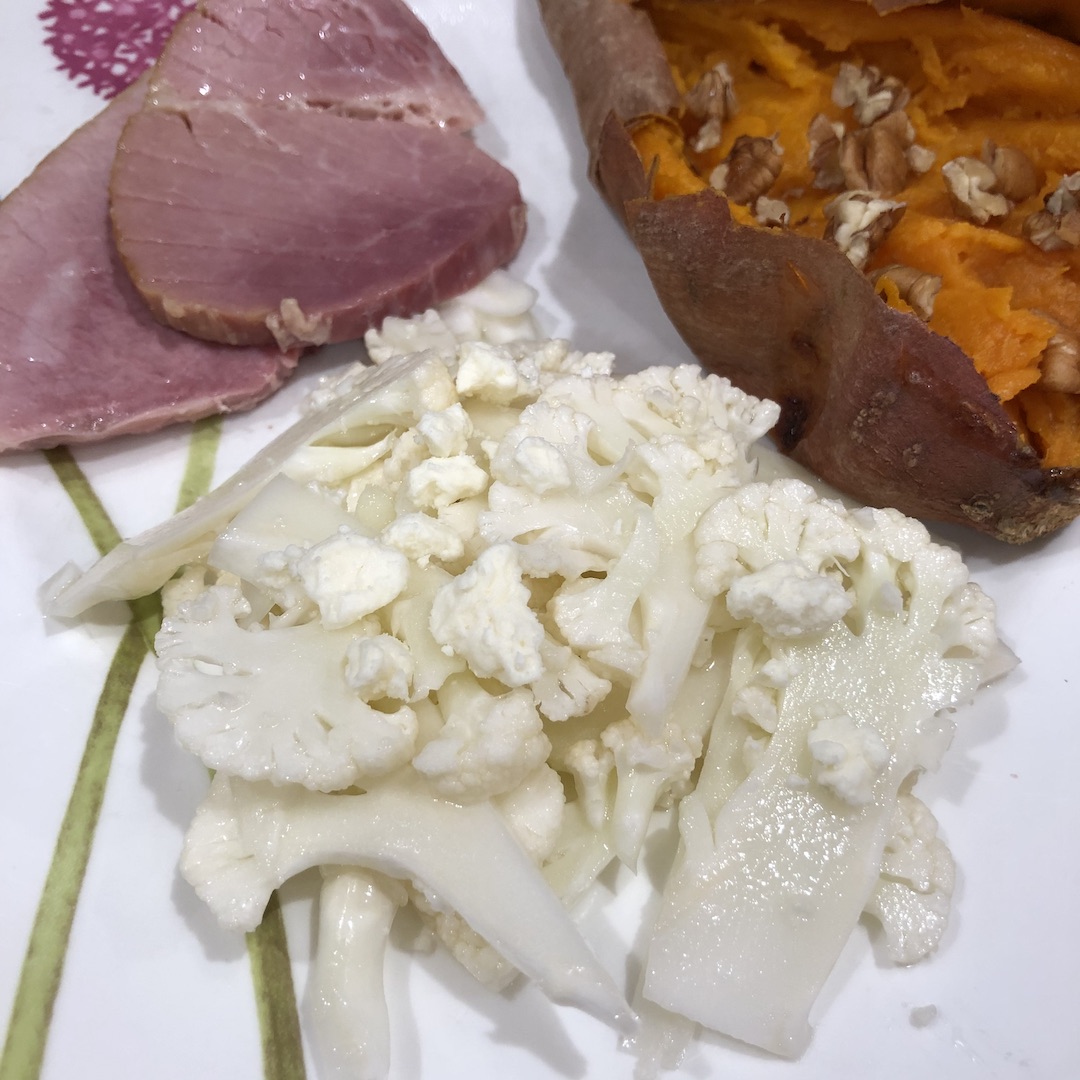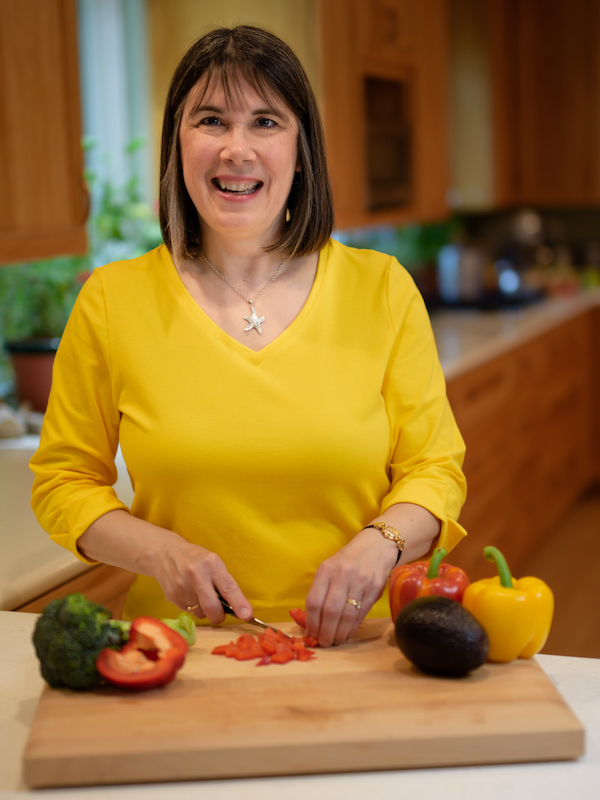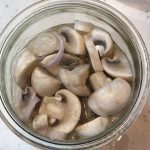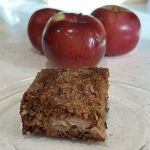
The Cooking Framework Quiz is available by clicking the button below.
Don’t miss an episode!
The button below will take you to Apple Podcasts to subscribe.
Or visit your favorite podcast provider to subscribe.
Thank you!
Transcript
Welcome to The Sensitive Kitchen. Where home cooks are inspired to Cook to Enable Those You Love to Flourish.
I’m Cindy Sullivan, registered dietitian, passionate nutrition educator, and accomplished home cook. Whether you’re changing how you cook for food sensitivities, allergies, intolerances, or just trying to eat healthier on a budget, you’re in the right place. Most episodes, I will share favorite recipes as well as modification tips, and nutrition benefits. Occasionally I’ll have a guest or special episode like modifying holiday favorites.
My favorite foods? They’re raspberries and homemade chocolate chip cookies. My latest cooking project was long fermented sourdough bread.
To get us started today. I have a question for you. What are your top three ways to put more raw vegetables in dinner?
Cauliflower salad is one of ours. It evolved from a complicated salad using blue cheese and olives. Neither of which made it into this recipe. Cauliflower lasts a long time in your fridge, so do lemon and feta. So it’s a salad you can make days after your last grocery store trip. Cauliflower salad is tart and crunchy. It pairs well with baked sweet potatoes or butternut squash gratin.
But before I review how to make this simple salad with just five ingredients, let’s talk about why to put more cruciferous vegetables into your meals.
First of all, what’s a cruciferous vegetable? Cruciferous vegetable is that cabbage family. It includes broccoli cauliflower, brussel sprouts, kale, turnips, and turnip greens, arugala which in some parts of the world is also known as rocket, bok choy and many more.
These vegetables are good sources of a variety of nutrients, but today I want to talk about their activity to help your body fight inflammation and oxidative stress. Since we know that chronic inflammation and oxidative stress are at the root of many chronic diseases, as well as perhaps aging, we want to reduce both inflammation and accident of stress to reduce our risk of diseases like cancer, heart disease, diabetes, and some of the effects of aging, like wrinkles.
To live a long and healthy life, we want low levels of inflammation and little oxidative stress. We have a couple of ways to do this by diet.
One is that we can eat antioxidant nutrients like vitamin C, vitamin E, beta carotene, which is a plant precursor of vitamin A. These antioxidant nutrients reduce one free, radical at a time. Effective, but slow.
The second way is much faster and more effective. This way turns on a transcription factor. It’s called NRF2, which yes is an abbreviation. This NRF2 enables our body to produce enzymes. Those enzymes disable free radicals. NRF2 has many actions in our body, but an additional one is to help reduce inflammation by turning off another transcription factor.
So how do you get this NRF2? If you eat the bioactive compound called sulforaphane, your body makes NRF2, then NRF2 enables, or turns on, your genes to make proteins, which are those powerful antioxidant enzymes. Instead of one vitamin molecule like vitamin C inactivating one free radical each enzyme will inactivate many, many free radicals making it a much more powerful antioxidant.
So where do we get this sulforaphane that turns on NRF2? It’s made in cruciferous vegetables when you cut them and break apart their cells. Cruciferous vegetables contain both the enzyme and the precursor to make sulforaphane, but it’s not until they’re cut that they mix together and begin to produce sulforaphane. So when we cut the vegetables, the enzyme goes to work making sulforaphane.
The problem is that this enzyme, like most enzymes, is inactivated when it’s exposed to either heat or acid. So if we cut up our broccoli and immediately cook it, the enzyme does not have time to make much sulforaphane before it’s inactivated. Or if we cut the cauliflower for this salad, we’re going to talk about today and then immediately add the lemon dressing, little sulforaphane will be made by because the acid in the lemon in the dressing will inactivate the enzyme.
To solve this problem, we’re going to use, what’s called a “hack and hold” technique. It means that you’re going to cut your cruciferous vegetables 40 to 60 minutes before you cook them. Or in this case, before you add the dressing. The sulforaphane is fairly heat, stable and acid resistant. So once it’s made it will stay there. At least for awhile, it will diminish over time. So there may not be much left in the pre-cut cole slaw mixes in the grocery store that are days or weeks old.
So as you begin your dinner preparation, cut your cruciferous vegetables first, and then do everything else. Another tip to increase. Sulforaphane from researcher, Dr. Michael Greger MD is about mustard seeds. It turns out that mustard greens are cruciferous vegetables and their ground seeds contain this enzyme in a form that’s more stable than the form that’s found in vegetables.
In one study, frozen broccoli was cooked. Then ground mustard was added to the frozen broccoli at the table. This study actually looked at the levels of sulforaphane in people’s blood. Adding mustard powder at the table, increased the sulforaphane in people’s blood point dramatically. In other words, a pinch of ground mustard contains enough enzyme to make sulforaphane, even in previously frozen broccoli.
Unfortunately many people are not fond of the taste of mustard powder sprinkled, on their food at the table. If you are use it, the good news is, is that horseradish daikon or red radishes eaten at the same time or the same meal. And wasabi will do the same thing. Remember though, that you’re adding these so that their enzymes will turn the precursor in broccoli or cauliflower into sulforaphane.
So no heat or acid to these enzyme containing condiments because remember heat and acid inactivate the enzyme. For those of you who want more information, I highly recommend a book written by a dietitian colleague of mine. Amanda Archibald, her book, The Genomic Kitchen helps you put all this important research together while you’re cooking in the kitchen. For some of you, it may be a little too technical, but she does a good job of making it pretty readable.
Dr. Michael Greger also has some wonderful short videos that I will link to in the show notes. And they’re practical and easy to understand. Is this message a little complicated? Yes, but I’m trying to give you another important reason to eat the broccoli, cabbage, cauliflower, kale, and perhaps modify the way you prepare them so that you get all the benefits from these foods.
Let me review and give you the bottom line for your kitchen. You want to eat more cruciferous vegetables because they can give you a compound called sulforaphane, which turns on N RF2 in your body. NRF2 enables your body to make enzymes that are powerful antioxidantenzymes. NRF2 also turns off an inflammatory transcription factor.
So if you prepare them properly,so the sulforaphane can be formed, you can reduce oxidative stress and inflammation in your body. Preparing them properly means cutting them 40 to 60 minutes before you cook them or add acid to them. Or you can add mustard powder, horseradish, recite red or daikon radishes at the table.
So our recipe today helps increase your cruciferous vegetable intake. Cauliflower salad is a staple in our household.
Cauliflower salad tastes best when the tangy dressing can coat the cauliflower slices, which means cutting it thinly. A mandalin, or a food processor can do the job, but I just use a knife. Cutting the cauliflower takes longer the first five times you do it, but it really just takes a little practice, a fairly sharp knife and a few minutes.
For years, this was the only way my family ate cauliflower since I was not a huge fan of cooked cauliflower. Recently, however, I’ve been become a fan of roasted cauliflower, but that’s another recipe and post. This is the recipe that does not use exact amounts. After you’ve made it several times, you can just kind of eyeball it.
First, take your cauliflower out of the packaging and turn it upside down in your sink.
Use a knife and go around the core. Kind of like you’re cutting around a pumpkin stem to carve a jack-o-lantern. Throw the core away and run water thoroughly over both the inside and outside of the head of cauliflower. Drain it in the sink and then move it to a towel to catch water.
Now you have a choice. You can either cut the cauliflower into slices about an inch and a half wide,or you can cut it into flowerets. Both work well, and neither is better. From the slices or the flowerets, you’re going to cut thin slices of cauliflower. I usually cut it into flowerets, and slice, but it’s really personal preference. Try it one way and then the other and see what you like best. I have pictures of both on the blog.
Slice your cauliflower thinly about an eighth to a 16th of an inch thin slices. You’ll have some crumbles from the edge of the flowerets no matter which method you choose, just scoop them up and put them in the bowl. Slice until you have enough for your family. I usually slice about a third to a half of a head of cauliflower.
Surround your uncut cauliflowerwith a paper towel, place in a plastic bag and put it in your vegetable drawer.
Now let your cauliflower sit on the counter in the bowl for 40 to 60 minutes while you prepare the rest of dinner. This time will allow the disease fighting sulforaphane to develop. If you only have 20 minutes, it’s okay. Let it sit for 20 minutes. A lot of it will still develop. While the cauliflowers resting, make the dressing.
In a small bowl, squeeze about one lemon. Now how much cauliflower you sliced as well as how juicy your lemon is, will determine how much lemon you need. For a half a head of cauliflower, start with one lemon. Add about a half teaspoon of salt. Then add half as much olive or avocado oil as you have lemon.
It’s possible you may have to make more dressing. Better too much dressing than not enough. No one wants dry sliced cauliflower on their plates. Full confession: Many times I have squeezed more juice for lemon for dressing just as we are trying to sit down to dinner!
Put the dressing on the salad after the sliced cauliflower has sat 40 to 60 minutes, ideally, and that’s for the best disease fighting benefits. Remember the acid in the dressing prevents the formation of sulforaphane, the disease fighting compound you want.
Keep Cooking to Enable Those You Love to Flourish. Thanks so much for joining me today. Have a great day. Bye-bye.
Resources
Recommended Book:
The Genomic Kitchen by Amanda Archibald, RD, 2019
Visit Amanda’s fabulous website to learn more!
Recommended Videos
https://nutritionfacts.org/2016/02/09/how-to-cook-broccoli/
How to Cook Broccoli
Written By Michael Greger M.D. FACLM on February 9th, 2016
Second Strategy to Cooking Broccoli
Michael Greger M.D. FACLM August 15th, 2014 Volume 20
Sometimes the Enzyme Myth Is True
https://nutritionfacts.org/video/sometimes-the-enzyme-myth-is-true/
References
Anti-Cancer Foods: Which Crucifers are Best Raw?
https://eatandbeatcancer.com/2014/05/03/anti-cancer-foods-which-crucifers-are-best-raw/
Qin M. Chen and Anthony J. Maltagliati
Nrf2 at the heart of oxidative stress and cardiac protection
01 FEB 2018https://doi.org/10.1152/physiolgenomics.00041.2017
Ghawi SK, Methven L, Niranjan K. The potential to intensify sulforaphane formation in cooked broccoli (Brassica oleracea var. italica) using mustard seeds (Sinapis alba). Food Chem. 2013 Jun 1;138(2-3):1734-41. doi: 10.1016/j.foodchem.2012.10.119. Epub 2012 Nov 12. PMID: 23411305.
Ginés Benito Martínez-Hernández, Francisco Artés-Hernández, Perla A. Gómez, Francisco Artés,
Induced changes in bioactive compounds of kailan-hybrid broccoli after innovative processing and storage,
Volume 5, Issue 1, January 2013, Pages 133-143 Pages 133-143,
ISSN 1756-4646,
https://doi.org/10.1016/j.jff.2012.09.004.
(https://www.sciencedirect.com/science/article/pii/S1756464612001429)
https://nutritionfacts.org/2016/02/09/how-to-cook-broccoli/
How to Cook Broccoli
Written By Michael Greger M.D. FACLM on February 9th, 2016
Second Strategy to Cooking Broccoli
Michael Greger M.D. FACLM August 15th, 2014 Volume 20
Sometimes the Enzyme Myth Is True
https://nutritionfacts.org/video/sometimes-the-enzyme-myth-is-true/
Song L, Thornalley PJ. Effect of storage, processing and cooking on glucosinolate content of Brassica vegetables. Food Chem Toxicol. 2007 Feb;45(2):216-24. doi: 10.1016/j.fct.2006.07.021. Epub 2006 Aug 30. PMID: 17011103.
Effect of storage, processing and cooking on glucosinolate content of Brassica vegetables
Lijiang Song 1 , Paul J Thornalley
Affiliations expand
- PMID: 17011103 DOI: 10.1016/j.fct.2006.07.021




